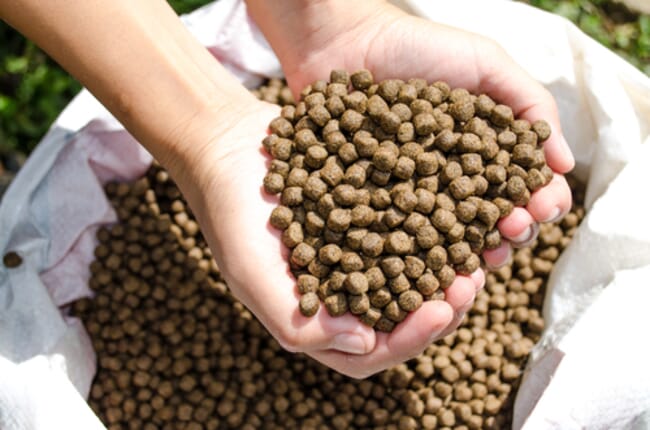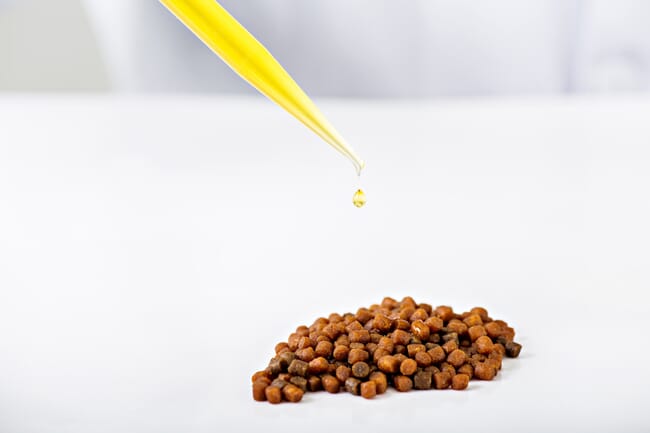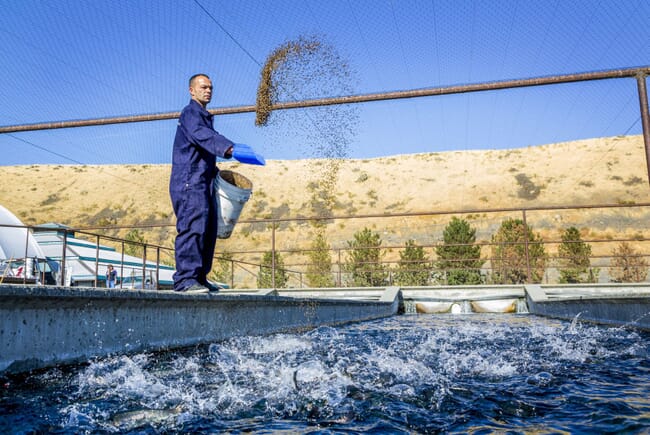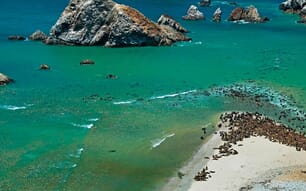A recent paper published in Reviews in fisheries science & aquaculture argues that aquafeed manufacturers need to consider a raft of social, environmental and economic indicators when formulating sustainable feeds. They explain that fish oil and fishmeal replacement and fish-in-fish-out (FIFO) measures are only part of aquafeed’s sustainability picture – exclusively focusing on these areas could undermine the sector’s other environmental and social initiatives.

Instead, the researchers argue that the aquafeed sector should take a holistic view of sustainability and acknowledge the trade-offs that come with different feed ingredients and feed formulations.
What FIFO metrics miss
Fish-in-fish-out measures track the amount of fishmeal and fish oil in compound aquafeeds. These metrics are useful because they highlight aquaculture’s continued dependence on the wild fisheries sector. However, the researchers argue that the FIFO metrics’ narrow focus on fishery pressure can cast marine conservation as the only goal of aquaculture’s sustainability efforts. In reality, aquaculture’s sustainability challenges are more nuanced – replacing all fishmeal and fish oil in aquafeeds won’t automatically make the blue economy “greener”.
There are environmental trade-offs when aquafeed manufacturers substitute fish-based protein with other materials. Replacing fishmeal and fish oil with soy can have serious implications for deforestation and land conversion. Creating novel feed ingredients can generate high volumes of CO₂. In some cases, using fishmeal and fish oil from a sustainably managed fishery can be “greener” than using a soy or corn-based aquafeed. The aquafeed industry needs a broader lens to account for the environmental impacts of various feed components. Taking a holistic view will help the sector reach its sustainability goals.

How can the aquafeed sector become more sustainable?
The researchers highlighted four key areas where the aquafeed sector could focus sustainability efforts. They included immediate steps that would address environmental and food safety concerns, as well as longer-term strategies.
Feed formulation and ingredient selection
Producers need to prohibit the use of non-approved chemicals and feed additives – antibiotics, hormones, pigments and non-protein compounds may provide short-term benefits, but undermine long-term sustainability goals. Formulators also need to exclude non-sustainable marine feed ingredients in aquafeeds. This includes meals, oils, hydrolysates that are derived from overexploited wild-caught fisheries, as well as ingredients from other marine plant and animal species. Formulators should also remove non-sustainable and adulterated terrestrial feed ingredients. Feed ingredients that are linked with deforestation and land conversion should be kept out of aquafeed, and using heavily subsidised feed ingredients should also be phased out. For biosecurity purposes, formulators need to prohibit re-feeding (feeding fish aquafeed or processing wastes that have been derived from the same species).
Taking a broader view of feed formulation, the researchers recommend reducing the carbon footprint of aquafeeds. This means reducing the use and amount of imported feed ingredients while increasing the amount of locally available or recycled ones.
Feed manufacture and feed quality
Improving oversight and transparency in this segment of the value chain would provide huge sustainability benefits. Ensuring that manufacturing plants are run in accordance with national labour, environmental and quality standards would address many of the criticisms levelled at the aquaculture sector. Transparent labels on aquafeed would also be a major step forward.
Long-term, the researchers suggest that feed manufacturers minimise the use of mill sweepings and processing wastes in finished aquafeeds. Establishing in-house research and development teams to test novel feed additives, determine apparent nutrient digestibility and collect farm data would also be a sustainability boon. This type of research would provide crucial benchmarking data and ensure that factories produce high-quality and efficient aquafeed.
On-farm feed use and its impacts
The researchers highlight data collection and farm stewardship as key ways to improve sustainability. By optimising feeding systems and feed use, farmers can reduce costs and address many of the environmental concerns stemming from production. If farm operators can regularly monitor parameters like feed consumption, biomass, water quality, survival and feed efficiency, they will be able to identify problem areas and take immediate action. Fish farmers should track waste nutrient levels during the culture cycle to get a better sense of the environmental impact of their feeds.

When focusing on feed specifically, the researchers note that farmers need to store aquafeed in protected, cool and well-ventilated conditions to ensure nutrient stability. They also recommend that farmers use feeds on a first-in-first-out basis. Top-dressing aquafeeds with other ingredients like antibiotics and growth promoters should be prohibited.
Fish quality and food safety
The focus at this point in the value chain was on aquafeed’s impact on the finishing quality of fish. Aquaculture products should meet food safety and nutrition standards when they hit the market, especially if they are earmarked for human consumption. If aquafeeds stand in the way of this portion of the value chain, it undermines other sustainability efforts.
As a long-term strategy, the researchers suggest that aquafeed manufacturers maximise the use of cultured fish and crustaceans. Repurposing trimmings and offcuts for human consumption in fast food or ready meals would be a value-add for producers and reduce food waste. Taking these steps would let the aquafeed industry become more efficient and help put it on a more sustainable trajectory.
Read the full article in Reviews in fisheries science & aquaculture.




